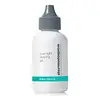What's inside
What's inside
 Key Ingredients
Key Ingredients

 Benefits
Benefits

 Concerns
Concerns

 Ingredients Side-by-side
Ingredients Side-by-side

Water
Skin ConditioningGlycolic Acid
BufferingButylene Glycol
HumectantGlycerin
HumectantSodium Hydroxide
BufferingLactic Acid
BufferingSalicylic Acid
MaskingTartaric Acid
BufferingVitis Vinifera Juice Extract
AntioxidantAloe Barbadensis Leaf Juice
Skin ConditioningOpuntia Ficus-Indica Extract
Skin ConditioningAesculus Hippocastanum Seed Extract
Skin ConditioningCamellia Sinensis Leaf Extract
AntimicrobialRubus Idaeus Fruit Extract
AstringentSaccharomyces Cerevisiae Extract
Skin ConditioningBuddleja Davidii Meristem Cell Culture
Skin ConditioningSclerocarya Birrea Seed Oil
HumectantSodium Hyaluronate Crosspolymer
HumectantAllantoin
Skin ConditioningHydroxyethylcellulose
Emulsion StabilisingGalactoarabinan
Propanediol
SolventCitric Acid
BufferingTetrasodium Glutamate Diacetate
Xanthan Gum
EmulsifyingHexylene Glycol
EmulsifyingPhenoxyethanol
PreservativeSodium Benzoate
MaskingCaprylyl Glycol
EmollientPotassium Sorbate
PreservativePentylene Glycol
Skin ConditioningSodium Carbonate
BufferingSodium Chloride
MaskingDisodium Phosphate
BufferingSodium Phosphate
BufferingEthylhexylglycerin
Skin ConditioningWater, Glycolic Acid, Butylene Glycol, Glycerin, Sodium Hydroxide, Lactic Acid, Salicylic Acid, Tartaric Acid, Vitis Vinifera Juice Extract, Aloe Barbadensis Leaf Juice, Opuntia Ficus-Indica Extract, Aesculus Hippocastanum Seed Extract, Camellia Sinensis Leaf Extract, Rubus Idaeus Fruit Extract, Saccharomyces Cerevisiae Extract, Buddleja Davidii Meristem Cell Culture, Sclerocarya Birrea Seed Oil, Sodium Hyaluronate Crosspolymer, Allantoin, Hydroxyethylcellulose, Galactoarabinan, Propanediol, Citric Acid, Tetrasodium Glutamate Diacetate, Xanthan Gum, Hexylene Glycol, Phenoxyethanol, Sodium Benzoate, Caprylyl Glycol, Potassium Sorbate, Pentylene Glycol, Sodium Carbonate, Sodium Chloride, Disodium Phosphate, Sodium Phosphate, Ethylhexylglycerin
Salicylic Acid 2%
MaskingWater
Skin ConditioningPEG-32
HumectantButylene Glycol
HumectantPvm/Ma Decadiene Crosspolymer
Niacinamide
SmoothingDipotassium Glycyrrhizate
HumectantNordihydroguaiaretic Acid
AntioxidantZinc Gluconate
Skin ConditioningZinc Acetate
AntimicrobialMahonia Aquifolium Root Extract
AstringentLavandula Angustifolia Flower/Leaf/Stem Extract
MaskingCamellia Oleifera Leaf Extract
AstringentSpiraea Ulmaria Extract
AstringentAesculus Hippocastanum Seed Extract
Skin ConditioningCrithmum Maritimum Extract
Skin ConditioningYeast Extract
Skin ConditioningMelaleuca Alternifolia Leaf Oil
AntioxidantRosmarinus Officinalis Leaf Oil
MaskingSalvia Officinalis Oil
MaskingCitrus Aurantium Dulcis Oil
MaskingGeranium Maculatum Oil
MaskingZingiber Officinale Root Oil
MaskingCymbopogon Martini Oil
MaskingCymbopogon Nardus Oil
MaskingSodium Hyaluronate
HumectantBiotin
AntiseborrhoeicPanthenol
Skin ConditioningCaffeine
Skin ConditioningCamphor
Masking10-Hydroxydecanoic Acid
Skin ConditioningSebacic Acid
BufferingCeramide AP
Skin Conditioning1,10-Decanediol
SolventOleanolic Acid
Skin ConditioningXanthan Gum
EmulsifyingCarbomer
Emulsion StabilisingPolysorbate 20
EmulsifyingPEG-40 Hydrogenated Castor Oil
EmulsifyingAmmonium Glycyrrhizate
MaskingPropylene Glycol
HumectantGlycerin
HumectantPEG-60 Almond Glycerides
EmulsifyingHydrogenated Vegetable Oil
EmollientCaprylyl Glycol
EmollientSodium Hydroxide
BufferingCaprylic/Capric Triglyceride
MaskingChlorphenesin
AntimicrobialPhenoxyethanol
PreservativeLimonene
PerfumingLinalool
PerfumingCitronellol
PerfumingGeraniol
PerfumingSalicylic Acid 2%, Water, PEG-32, Butylene Glycol, Pvm/Ma Decadiene Crosspolymer, Niacinamide, Dipotassium Glycyrrhizate, Nordihydroguaiaretic Acid, Zinc Gluconate, Zinc Acetate, Mahonia Aquifolium Root Extract, Lavandula Angustifolia Flower/Leaf/Stem Extract, Camellia Oleifera Leaf Extract, Spiraea Ulmaria Extract, Aesculus Hippocastanum Seed Extract, Crithmum Maritimum Extract, Yeast Extract, Melaleuca Alternifolia Leaf Oil, Rosmarinus Officinalis Leaf Oil, Salvia Officinalis Oil, Citrus Aurantium Dulcis Oil, Geranium Maculatum Oil, Zingiber Officinale Root Oil, Cymbopogon Martini Oil, Cymbopogon Nardus Oil, Sodium Hyaluronate, Biotin, Panthenol, Caffeine, Camphor, 10-Hydroxydecanoic Acid, Sebacic Acid, Ceramide AP, 1,10-Decanediol, Oleanolic Acid, Xanthan Gum, Carbomer, Polysorbate 20, PEG-40 Hydrogenated Castor Oil, Ammonium Glycyrrhizate, Propylene Glycol, Glycerin, PEG-60 Almond Glycerides, Hydrogenated Vegetable Oil, Caprylyl Glycol, Sodium Hydroxide, Caprylic/Capric Triglyceride, Chlorphenesin, Phenoxyethanol, Limonene, Linalool, Citronellol, Geraniol
 Reviews
Reviews

Ingredients Explained
These ingredients are found in both products.
Ingredients higher up in an ingredient list are typically present in a larger amount.
We don't have a description for Aesculus Hippocastanum Seed Extract yet.
Butylene Glycol (or BG) is used within cosmetic products for a few different reasons:
Overall, Butylene Glycol is a safe and well-rounded ingredient that works well with other ingredients.
Though this ingredient works well with most skin types, some people with sensitive skin may experience a reaction such as allergic rashes, closed comedones, or itchiness.
Learn more about Butylene GlycolCaprylyl Glycol is a humectant and emollient, meaning it attracts and preserves moisture.
It is a common ingredient in many products, especially those designed to hydrate skin. The primary benefits are retaining moisture, skin softening, and promoting a healthy skin barrier.
Though Caprylyl Glycol is an alcohol derived from fatty acids, it is not the kind that can dry out skin.
This ingredient is also used as a preservative to extend the life of products. It has slight antimicrobial properties.
Learn more about Caprylyl GlycolGlycerin is already naturally found in your skin. It helps moisturize and protect your skin.
A study from 2016 found glycerin to be more effective as a humectant than AHAs and hyaluronic acid.
As a humectant, it helps the skin stay hydrated by pulling moisture to your skin. The low molecular weight of glycerin allows it to pull moisture into the deeper layers of your skin.
Hydrated skin improves your skin barrier; Your skin barrier helps protect against irritants and bacteria.
Glycerin has also been found to have antimicrobial and antiviral properties. Due to these properties, glycerin is often used in wound and burn treatments.
In cosmetics, glycerin is usually derived from plants such as soybean or palm. However, it can also be sourced from animals, such as tallow or animal fat.
This ingredient is organic, colorless, odorless, and non-toxic.
Glycerin is the name for this ingredient in American English. British English uses Glycerol/Glycerine.
Learn more about GlycerinPhenoxyethanol is a preservative that has germicide, antimicrobial, and aromatic properties. Studies show that phenoxyethanol can prevent microbial growth. By itself, it has a scent that is similar to that of a rose.
It's often used in formulations along with Caprylyl Glycol to preserve the shelf life of products.
Salicylic Acid (also known as beta hydroxy acid or BHA) is a well-known ingredient for treating skin that struggles with acne and clogged pores. It exfoliates both the skin's surface and deep within the pores to help clear out buildup, control oil, and reduce inflammation.
Unlike AHAs (alpha hydroxy acids), salicylic acid is oil-soluble. This allows it to penetrate into pores which makes it especially effective for treating blackheads and preventing future breakouts.
Salicylic acid is also known for its soothing properties. It has a similar structure to aspirin and can calm inflamed or irritated skin, making it a good option for acne-prone skin that is also sensitive.
Concentrations of 0.5-2% are recognized by the U.S. FDA as an over-the-counter topical acne product.
It can cause irritation and/or dryness if one's skin already has a compromised moisture barrier, so it's best to focus on repairing that before introducing this ingredient into your routine.
While salicylic acid does not increase sun sensitivity, it’s still important to wear sunscreen daily to protect your skin.
If you are looking for the ingredient called BHA or Butylated Hydroxyanisole, click here.
Learn more about Salicylic AcidSodium Hydroxide is also known as lye or caustic soda. It is used to adjust the pH of products; many ingredients require a specific pH to be effective.
In small amounts, sodium hydroxide is considered safe to use. However, large amounts may cause chemical burns due to its high alkaline.
Your skin has a natural pH and acid mantle. This acid mantle helps prevent harmful bacteria from breaking through. The acid mantle also helps keep your skin hydrated.
"Alkaline" refers to a high pH level. A low pH level would be considered acidic.
Learn more about Sodium HydroxideWater. It's the most common cosmetic ingredient of all. You'll usually see it at the top of ingredient lists, meaning that it makes up the largest part of the product.
So why is it so popular? Water most often acts as a solvent - this means that it helps dissolve other ingredients into the formulation.
You'll also recognize water as that liquid we all need to stay alive. If you see this, drink a glass of water. Stay hydrated!
Learn more about WaterXanthan gum is used as a stabilizer and thickener within cosmetic products. It helps give products a sticky, thick feeling - preventing them from being too runny.
On the technical side of things, xanthan gum is a polysaccharide - a combination consisting of multiple sugar molecules bonded together.
Xanthan gum is a pretty common and great ingredient. It is a natural, non-toxic, non-irritating ingredient that is also commonly used in food products.
Learn more about Xanthan Gum